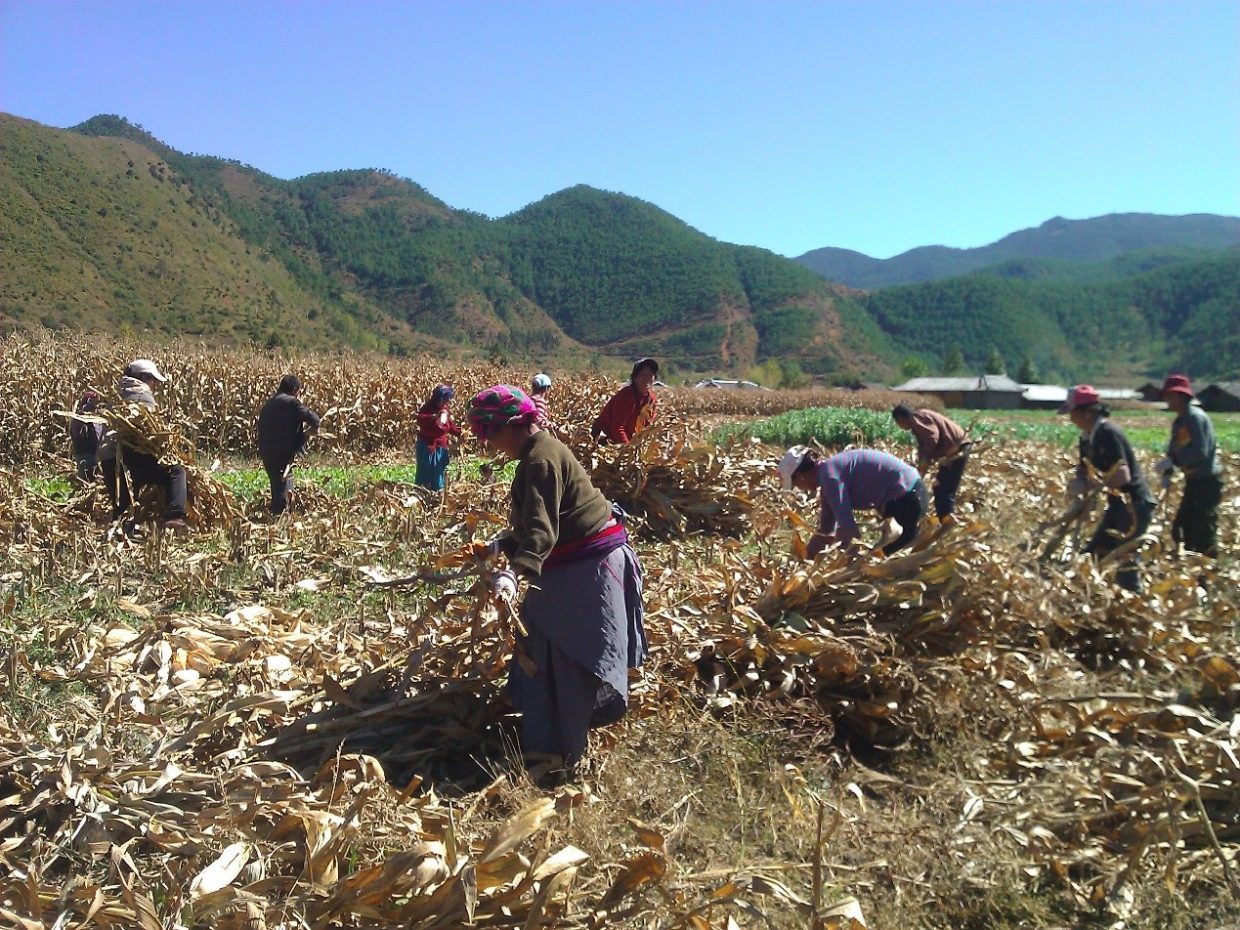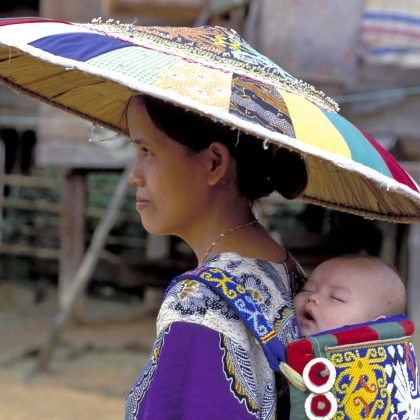Women reproducing communally is associated with lower investment from husbands
In a minority of societies, kinship follows the female line rather than the male line. The men in these matrilineal societies invest in their sisters’ offspring more than their own, which is a puzzle given that they are more related to the latter than the former. It has been argued that high paternity uncertainty (i.e., people have many partners) might explain matrilineal-biased investment by men. But models show that such matrilineal-biased investment could only evolve under unrealistically low paternity certainty.
The matrilineal Mosuo in Southwestern China are a rare matrilineal population in which male investment is so low that husband and wife do not even live together. This is known as ‘duolocal residence’ with ‘visiting marriage’, and men live with their own matrilineal kin. Sisters live together and raise their children together in their mother’s household. This social system thus provides an excellent opportunity to study the evolution of matrilineal-biased investment by men. In a previous study, we modelled Mosuo men’s optimal allocation of effort among three realms: work on sister’s farm, work on wife’s farm, and activities enhancing extra-pair reproductive success to maximize inclusive fitness (Wu et al, 2013). We predicted that, when women reproduce communally and share household resources, higher level of what is known as ‘communal breeding’ would be associated with lower investment from the husband. This is because any investments from the husband will be diluted by unrelated individuals in wife’s households. As a result, men tend to invest less in their wife’s household the more women are reproducing communally. In the planting and harvest season, Mosuo people work on the farm communally, and men might help their wife’s or their natal farm (Figure 1).

In a study now published in Evolutionary Human Sciences (He et al., 2022), we used our data on who was observed working on which farm in the matrilineal Mosuo to test these model predictions. We found that, on average, a man in a “visiting marriage” is less closely related with his wife’s household and less likely to help, the more women of reproductive age or with dependant children live there. These results thus support our predictions. Thus, communal breeding by women was associated with lower man’s investment in his wife’s farm, leaving him time to increase his investment in his sister’s farm, where he is related to everybody.
References:
He, Q.-Q., Rui, J.-W., Zhang, L., Tao, Y., Wu, J.-J., Mace, R. & Ji, T. 2022. Communal breeding by women is associated with lower investment from husbands. Evolutionary Human Sciences, 1-27. https://doi.org/10.1017/ehs.2022.47
Wu, J. J., He, Q.-Q., Deng, L.-L., Wang, S. C., Mace, R., Ji, T., & Tao, Y. (2013). Communal breeding promotes a matrilineal social system where husband and wife live apart. Proceedings of the Royal Society B: Biological Sciences, 280 (1758), 20130010. https://doi.org/10.1098/rspb.2013.0010
Author biography:
Qiao-Qiao He is an associate professor in Ecology at Shengyang Normal University. She studies how human cooperate and compete with kin or non-kin, working with rural communities in west China.
Original publication:
Qiao-Qiao He, Jun-Wen Rui, Li Zhang, Yi Tao, Jia-Jia Wu, Ruth Mace and Ting Ji
Communal breeding by women is associated with lower investment from husbands
Evolutionary Human Sciences, 20 October 2022, DOI: 10.1017/ehs.2022.47






